|
|
AL PAN PAN Y AL VINO TORO
LA CONSTELACION DE LAS PLEYADES ESTA UBICADO EN TAURO/TORO
EL SANTO GRIAL ESTA CODIFICADO EN EL DISEÑO DEL VATICANO EN FUNCION A LAS PLEYADES
1 Pedro 5:13: La iglesia que está en Babilonia, elegida juntamente con vosotros, y Marcos mi HIJO, os saludan.
BULL ES TORO EN INGLES
47+74=121
EL PRIMERO DE MAYO ES EL DIA NUMERO 121=11X11 DEL AÑO. El dia numero 121 del año gregoriano es el 1 de mayo.
| bull in Simple Gematria Equals: 47 |
( |
b
2 |
u
21 |
l
12 |
l
12 |
) |

La correlación del Toro y la diosa, incluyendo la sangre del Toro siendo entregada a la Luna para la fructificación, también puede ser explicada a través de la coexistencia de su objetivo del procreativo. Cuando la cabeza del Toro es vista desde una perceptiva frontal, su cráneo y cuernos exhiben un asombroso parecido a los órganos uterinos de la hembra humana.
FUERTE NEXO DE FATIMA CON EL 911 (11 DE SEPTIEMBRE DEL 2001), 119 (CAIDA DEL MURO DE BERLIN), 15 DE AGOSTO (ASUNCION DE LA VIRGEN) Y EL 29 DE JUNIO (DIA DE SAN PEDRO Y SAN PABLO)-RELACION CON EL NUMERO 47
180-47=133
EL NUMERO 47 ESTA MUY REPETIDO EN EL CALENDARIO DE NOE.
17 DEL SEGUNDO MES EQUIVALE AL DIA NUMERO 47 DESDE EL INICIO DEL AÑO.
En contexto al calendario gregoriano sabemos que el 29/6 (29 de junio o 29 del cuarto mes considerando como marzo el primero como era en la antiguedad) vemos un puente con el VERDADERO PENTECOSTES HEBREO QUE ES EL 29/4 O 29 DE THAMUS.
Éxodo 32:24: Y yo les respondí: ¿Quién tiene oro? Apartadlo. Y me lo dieron, y lo eché en el FUEGO, y salió este becerro.
The Egyptian name for the pyramids is 'Khuti' - 'The lights'. Davidson (2) believed that this name originated from the semetic equivelant which was 'Urim' - 'The lights'. In Phrygian and Greek, the root 'Ur' - 'light', became successively 'Pur' and 'Pyr' (fire), and 'Pyra' (Plural), for 'Beacon fires'. In Chaldee and Hebrew, he adds, 'Middin' = 'Measures'. Hence the Chaldee-Hebrew name is - 'Purim-middin'
Lo curioso es que el 29 de junio es el DIA NUMERO 180 DEL CALENDARIO GREGORIANO. HAY INCREIBLES NEXOS MATEMATICOS CON FATIMA, EL 911, ETC, ETC.
Desde el 13/3 o 13 de mayo hasta el 29 de junio tenemos 47 dias y desde el 29 de junio al 15 de agosto tambien tenemos 47 dias. Desde el 29/6 hasta el 13/10 tenemos 106 dias (180-74=106-74 es anagrama del 47) y desde el 15/3 (lanza de longino) hasta el 29/6 tambien tenemos 106 dias. El 15/3 TIENE UN FUERTE NEXO CON FATIMA DEBIDO A EL NEXO 13/10 CON EL 15/3 Y 15/3 CON EL 15/8 EN CONTEXTO AL NUMERO 153. Otro nexo INCREIBLE CON EL 11/9 ES LA INTERRELACION DEL 29/6 Y ESTE ULTIMO EN SU DIFERENCIA DE 74 DIAS e incluso CON EL 9 DE NOVIEMBRE Y TAMBIEN CON EL 29/6 CON EL NUMERO 133.
CONCRETAMENTE EL 29/6 TIENE UN FUERTE NEXO CON FATIMA Y EL 911
Tenemos tambien que desde el 1 de enero hasta el 15/3 o 15 de marzo hay 74 dias al igual que en el calendario hebreo desde el primero de nissan hasta el 15/3 o 15/sivan tambien hay 74 dias. Concretamente el 15/3 gregoriano es un paralelo matematico al 15/3 hebreo. Desde el 11 de sivan hasta el 29 de thamus (verdadero pentecostes) tambien tenemos 47 dias. Concretamente la LANZA DE LONGINO ES UN PARALELO ESOTERICO A EXODO 19 EN EL CONTEXTO AL 15 DE SIVAN Y ESO EXPLICA EN FORMA HEBREA EL NEXO CON EL NUMERO 153. UN NEXO MATEMATICO INCREIBLE ENTRE LA INDEPENDENCIA DE EEUU (4/7 o 4 de julio de 1776=NEXO 47) CON FATIMA ES QUE DESDE 1776 HASTA 1917 HAY 141 AÑOS=47X3. CONCRETAMENTE LA INDEPENDENCIA DE EEUU ESTA EN FUNCION A FATIMA O VICEVERSA. ¿COMO SE EXPLICA ESTA SITUACION? ES QUE EN 1917, EL DIA NUMERO 118/119, LUNA LLENA EN EL DIA INTERNACIONAL DE LA MUJER EL 8 DE MARZO, NOS CAYO EL 4 DE JULIO. ESTO EXPLICA LA INTERRELACION MATEMATICA E INCLUSO EL NEXO CON LA INDEPENDENCIA DE EEUU. EL 11 DE NOVIEMBRE DEL 2011, OSEA EL 11/11/11 JUSTAMENTE ES UN PERIODO EXACTO DE FATIMA E INDEPENDENCIA DE EEUU, YA QUE 1776+141+94=1776+235=1776+47X5. (5 ES EL NUMERO DE LA ALQUIMIA, OSEA DEL GRIAL)
EL MENSAJE DEL 11/11/11 (11+11+11=33) TIENE TOTAL NEXO CON FATIMA Y EL SANTO GRIAL

LUNA LLENA EN EL 10/11 DE NOVIEMBRE EN TAURO/GEMINIS-11/11/11=33
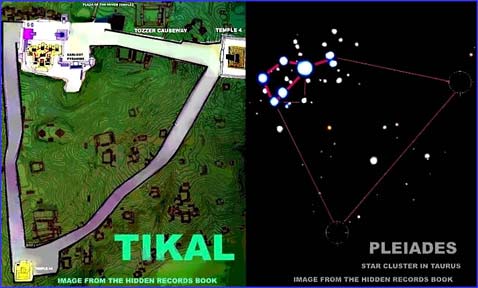 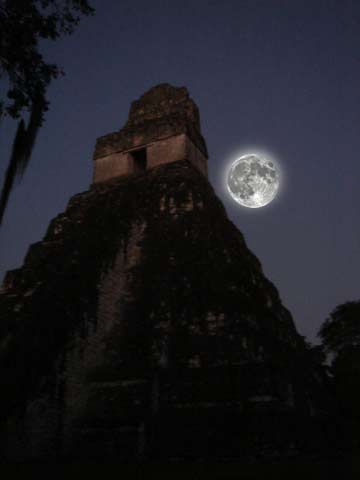
"11:11:11: Activating the Mayan Stargate"
Full Moon in the Land of the Maya
 La ubicacion alineada de CHICHEN ITZA, el 20 de mayo, en funcion a las PLEYADES aparentemente tiene un FUERTE NEXO CON LA VIRGEN DE FATIMA, ya que siguiendo la secuencia lunar de 1917 (luna nueva en luna llena), el 20 de mayo nos caeria 15 del tercer mes hebreo osea 15/3. Volvemos a tener un NEXO DE FATIMA CON EL NUMERO 153. En el año 2012 tenemos un eclipse en esa fecha. Osea que volvemos a tener un nexo esoterico con el 15/3 (15 de marzo), que es el dia de SAN LONGINO, el romano que le clavo la lanza a Nuestro Señor Jesucristo en la cruz. Otro detalle a tener en cuenta en este contexto es que el 11/9 (11 de noviembre) es el dia numero 315 del año gregoriano. El, 9 de noviembre del 2011 con ALBERADAN en LUNA LLENA aparentemente tiene este mensaje (11/11/11). En el calendario hebreo el 9 de noviembre (luna llena el 8 de marzo como sucedio en Fatima) nos cae 11 del noveno mes hebreo. Concretamente volvemos a tener un 911 pero en el calendario hebreo y el 5 de enero (Actualmente la Iglesia Catolica considera la fiesta de Reyes), tambien caeria un 9 del onceavo mes hebreo, osea otro 911. CONCRETAMENTE LA "VIRGEN DE FATIMA" TIENE UN FUERTE NEXO CON EL 911 E INCLUSO CON EL CALENDARIO MAYA. OTRO DETALLE CIENTIFICO A TENER EN CUENTA ES QUE EN 315 AÑOS SOLARES TENEMOS PRACTICAMENTE UN NUMERO ENTERO DE CICLOS LUNARES. EL SISTEMA LUNI-SOLAR ESTA DISEÑADO EN FUNCION A GENESIS 3:15. 1260 AÑOS ES IGUAL A 4X315. LAS MATEMATICAS SON EXACTAS PARA EL CREADOR EL UNIVERSO.
315 AÑOS=365.242256X315=115051.31064 dias
115051.31064/29.53059 (FRECUENCIA LUNAR)=3896.00447 (CASI REDONDO)
1260 AÑOS=1260X365.242256=460205.24256 dias
|
|
|
|
|
These are the four creatures of Ezekiel 1:10 and Revelation 4:7 which also relate to the four Apostles, the seasons, the elements and the guardians of the four directions.
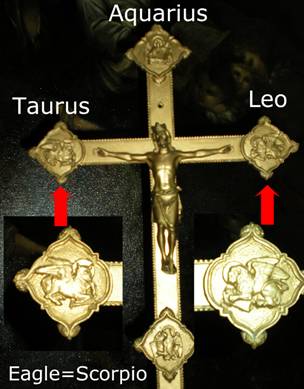
‘True Cross’ Cathedral Lisieux, France
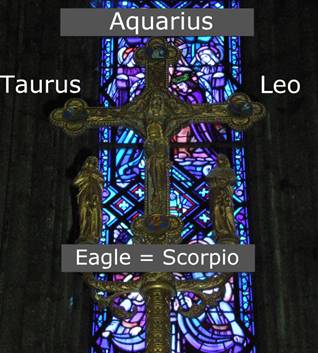
‘True Cross’, Baselique Notre Dame d’Ouvres La Delivrande, France
In churches, the four signs of the Zodiac often reoccur and are associated with ‘Judgment Day’ and the ‘End of Times’
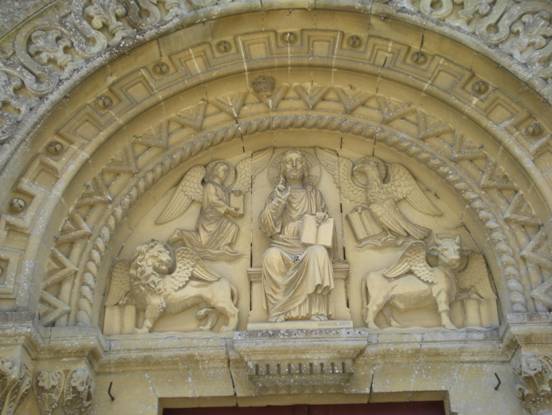
Jesus portrayed at the Last Judgment can often be found in the Tympanium above the entrance of churches and cathedrals. Notice, the lion (Leo) on the left, the bull on the right (Taurus), the angel on the left (Aquarius) and the eagle on the right ( Scorpio).
The four evangelists Luke, John, Mathew and Mark likewise have been associated with these four Zodiac signs as well:
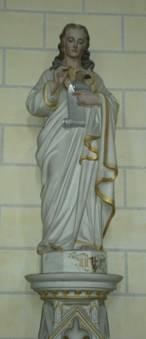 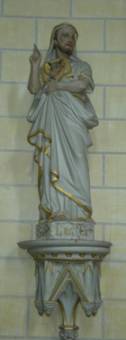 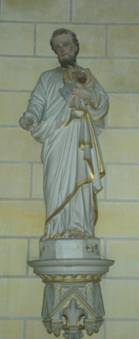 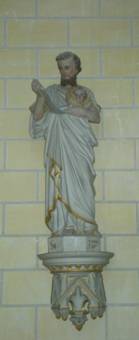
Mark = Scropio (Eagle), Luke = Taurus, John = Leo, Matthew = Aquarius
http://www.gabitogrupos.com/DESENMASCARANDO_LAS_FALSAS_DOCTRINAS/template.php?nm=1328639099 |
|
|
|
|
GOLDEN GATE/PUERTA DE ORO
| grail in Simple Gematria Equals: 47 |
( |
g
7 |
r
18 |
a
1 |
i
9 |
l
12 |
) |
| grail in Simple Gematria Equals: 47 |
( |
g
7 |
r
18 |
a
1 |
i
9 |
l
12 |
) |
| raquel in Simple Gematria Equals: 74 |
( |
r
18 |
a
1 |
q
17 |
u
21 |
e
5 |
l
12 |
) |
| john in Simple Gematria Equals: 47 |
( |
j
10 |
o
15 |
h
8 |
n
14 |
) |
| jesus in Simple Gematria Equals: 74 |
( |
j
10 |
e
5 |
s
19 |
u
21 |
s
19 |
) |
| giza in Simple Gematria Equals: 43 |
( |
g
7 |
i
9 |
z
26 |
a
1 |
) |
| mark in Simple Gematria Equals: 43 |
( |
m
13 |
a
1 |
r
18 |
k
11 |
) |
| gize in Simple Gematria Equals: 47 |
( |
g
7 |
i
9 |
z
26 |
e
5 |
) |
| john in Simple Gematria Equals: 47 |
( |
j
10 |
o
15 |
h
8 |
n
14 |
) |
These are the four creatures of Ezekiel 1:10 and Revelation 4:7 which also relate to the four Apostles, the seasons, the elements and the guardians of the four directions.

‘True Cross’ Cathedral Lisieux, France 
‘True Cross’, Baselique Notre Dame d’Ouvres La Delivrande, France
In churches, the four signs of the Zodiac often reoccur and are associated with ‘Judgment Day’ and the ‘End of Times’

Jesus portrayed at the Last Judgment can often be found in the Tympanium above the entrance of churches and cathedrals. Notice, the lion (Leo) on the left, the bull on the right (Taurus), the angel on the left (Aquarius) and the eagle on the right ( Scorpio).
The four evangelists Luke, John, Mathew and Mark likewise have been associated with these four Zodiac signs as well:
   
Mark = Scropio (Eagle), Luke = Taurus, John = Leo, Matthew = Aquarius
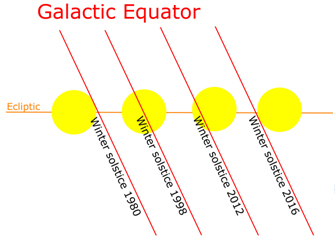 |
|
Winter Solstice Galactic Alignment of the Sun with the Galactic Equator
|
On Earth, the River Nile was the reflection of this great river in the sky, in accordance with the Hermetic principle "as above, so below." Herschel's earliest ingenious research has demonstrated that all of the pyramids along the river Nile represent constellations along the Milky Way, not just Orion! There are more than 50 pyramids in total, and their true meaning can only be deciphered when one considers the whole of Egypt.
During a Great Celestial Conjunction, the Sun crosses that great river in the sky, the Milky Way. Egyptologists explain that the solar God Ra (and Horus) required a boat because they sailed the Heavens from sunrise in the East to sunset in the West. At night, Ra travelled the Netherworld to be reborn in the morning at sunrise. Egyptologists reject the idea that the Egyptians understood the Precession of the Equinoxes and that the Sun also sojourns along the zodiac in a 26,000 year journey corresponding with the Precession Cycle.
In the Book of the Gates, the travel of the Sun at night along with the deceased pharaoh into the Netherworld is described. The Sun enters the Netherworld in the first hour just after sunset to be reborn in the morning at sunrise after a twelve hour nocturnal journey. There are many parallels, however, with the precessional journey of the Sun along the twelve signs of the zodiac to be discovered in the Book of the Gates. The 12 hours in the Book of Gates are structured into four groups of three hours, denoting a cross in the face of the clock. In the 12th hour Nun raises the solar barque with the scarab beetle of the Sun God from the primeval waters (Milky Way?), this is the hour of the rebirth of the Sun.
|
|
Left: Nun raises the solar barque from the primeval waters at ‘sunrise’, the time of the rebirth of the Sun.
|
During Ra's travel through all of the twelve signs of the zodiac in the precession cycle, he will be requiring a boat to twice cross that great river in the sky, the Milky Way! It is probably the only reason why the Egyptian deities required a Sun barque in the first place. Boats are used to cross waters, not skies, so it was used not for their nightly ecliptic travel from East to West through the Netherworld, but for their travels along the zodiac in the precession cycle. It is during this journey that the Sun would be required to cross the waters of the Milky Way at least twice. The Book of the Gates may therefore have been misinterpreted by Egyptologists as the nocturnal journey of the Sun simply because they reject the idea that the Egyptians understood Precession! Keep in mind that only twice per year on the equinox the day and night will be exactly 12 hours in length. It is therefore far more logical that the 12 hours in the Book of the Gates are in fact the 12 zodiacal Ages of the Precession Cycle.
Pharaohs in ancient Egypt were buried with their arms crossed holding Ankhs in their hands. This posture of the deceased pharaoh can be found on sarcophagus and in statues throughout Egypt. The Ankh represents a cross symbol.
|
|
Left: Grave statue of Tjel mayor of Memphis under Amenhotep III Dutch national museum of antiquities, Leiden.
Right: Sarcophagus with crossed arms and X cross on chest, Dutch National Museum of antiquities, Leiden.
|
Since the Greek inherited much of their wisdom from the Egyptians, it's more than reasonable to suspect that the gate or portal mentioned in the Book of the Gates through which the pharaoh enters the Netherworld is, in fact, the Gate of God that the Greek writer Macrobius writes about. The Gate of God was also called the Golden Gate, while the Gate of Men was called the Silver Gate. The very same Egyptian cross symbolism used by the pharaohs associated with the Golden and Silver gates of the soul (and the Sun) can still be recognized in the coat of arms of the Vatican, consisting of two crossed keys; one Golden, one Silver.
|
|
Silver and Golden cross in the Coat of Arms of the Vatican
|
The Golden Gate is the ecliptic Milky Way crossing at the Scorpio-Sagittarius nexus on the zodiac while the Silver Gate is the Milky Way ecliptic crossing at the Gemini-Taurus nexus. The Silver Gate was represented by the horns of Isis and the associated bull Taurus.
The Silver Gate is also clearly depicted in the Narmer Palette (3100 BC) named after the Egyptian pharaoh. The Narmer Palette shows the celestial goddess bull Bat (Taurus) with her horns bent over pointing exactly to the place of the rebirth of the Sun, the Silver Gate. The two cow's heads on top of the palette also represent Bat. In-between the two cow goddesses a hieroglyph is depicted representing the rising of the Sun in between two mountains on the horizon. It's a hieroglyph that is very similar to the Akhet hieroglyph with the same significance.
|
|
Bat on the left and right with the 'Akhet' glyph in between.
Dutch national museum of antiquities, Leiden
|
Bat was the goddess of the Milky Way considered to be a pool of Bat's cow milk. Bat was also the goddess of the human soul, the "Ba" that incarnated into human life form. Since the soul incarnated into human life passing through the Silver Gate (crossing of Milky Way and ecliptic), it's not surprising that Bat was both the goddess of the Milky Way and the human soul. Ba is a derivative of Bat, whereas "Ka" represents the human light-body. "Mer" represents the light of the Egyptian light-body-soul complex, the "Mer-Ka-Ba." Bat was also called the "Ba of Two Faces." Egyptologists are in the dark about her name and don't seem to understand that she was called this way, because there are actually two portals both to and from the Netherworld for the Ba to descend into the physical plane (Silver Gate) and ascend from the physical plane (Golden Gate). Both Hathor, Isis and Bat are all cow goddesses and Egyptologists have often pointed out the similarities between these goddesses depicted with cow-horns suspecting that they may have the same origins...they all represent the Silver Gate.
At the bottom of the Narmar palette in-between the horns of the bull, the very same hieroglyph is depicted as the one shown between two Bat bulls on top of the palette. This Akhet-like hieroglyph symbolises the rising Sun on the horizon.
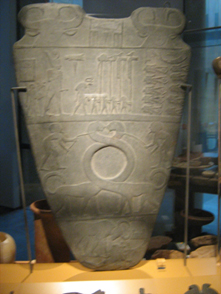 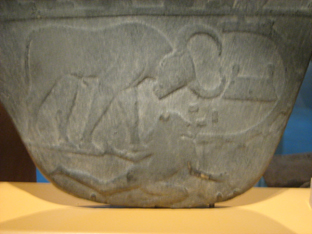 |
The Narmar Palette, bull in close up on the right. The bull is leaning towards the Silver Gate near the Gemini-Taurus nexus depicted in between the horns. The hieroglyph in between the horns resembles an Akhet glyph and represents the Silver Gate.
Dutch national museum of antiquities, Leiden
|
On the other side of the Narmer palette two identical men, hence suggesting twins are depicted. They are both looking over their shoulders to a particular square over the left man’s shoulder. We surmise that the twins represent Gemini which would make sense since the actual ecliptic Milky Way crossing of the Silver Gate occurs in 5° Gemini (sidereal zodiac) and the square could therefore be suggesting the Silver Gate.
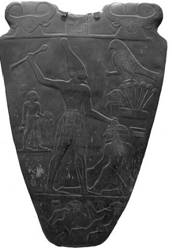 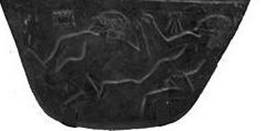
Narmer palette backside
Dutch national museum of antiquities, Leiden
The author Audrey of the website "Ancient Egypt" writes while referring to the Narmar Palette: "They present an overview of the astronomical event which occurred on September 21st in 4468BCE, when the Autumn (Fall) Equinox of the Sun was in conjunction with the Milky Way."
At the Autumnal Equinox, the Sun was indeed at the Milky Way, however at the Golden Gate. At the Vernal Equinox of 4468 BC, the Sun resided at the Silver Gate. The author (Audrey) does not seem to realise that this moment represented a Great Celestial Conjunction when the equinox axis (Vernal and Fall) aligned with the Galactic Equator and the Sun resided at the Gates of the Gods.
Instead, while interpreting the hieroglyphs of the 10 decapitated figures near the Solar Barque, he writes quote, "The full meaning of the hieroglyph can therefore be interpreted as 'the Sun at a sacred gateway, opening or portal'..."
While Hathor, Isis and Bat are all cow goddesses, Egyptologists have often pointed out the similarities between these goddesses depicted with cow-horns suspecting that they may have the same origins. . . .
We suggest that they all represent the Silver Gate.
There is an even older Egyptian goddess that later was associated with Isis and Hathor. Her name is Serket and she was the deification of the scorpion goddess who healed stings and bites. Eventually, Serket was associated with Isis and she was said to be just an aspect of Isis. Serket and Isis can therefore be regarded as the ‘Ba of Two Faces’. While Isis represents the Silver Gate at the Gemini-Taurus nexus, Serket is her counterpart and she represents the Golden Gate at the Scorpio-Sagittarius nexus. This is why she’s wearing the scorpion on her head while she joined Ra in his barque on his journey around the zodiac in a Great Year.
 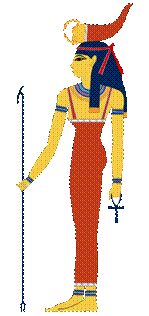
Left: Isis with the solar disk in between the horns representing the Silver Gate
Right: Serket with the scorpion at her head representing the Golden Gate.
The sacred Egyptian scarab beetle is a metaphor for the Sun in the precession cycle whereas the dung ball represents the Sun. The scarab beetle rolls its dung ball with his hind legs backwards, symbolizing the backward motion of the Sun through the zodiac in the precession cycle. Since the scarab beetle has many similarities with a scorpion, we surmise that Serket and the scarab beetle both represent the Golden Gate in Egyptian mythology.

Right: Scarab representing the crossing of the ecliptic and Milky Way
near Sagittarius-Scorpio nexus. The dung ball of Scarab beetle is the Sun.
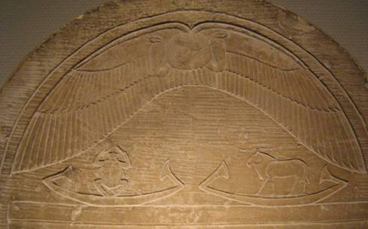
On the left, the scarab beetle in a barque. On the right, the bull with the horns in a barque. They represent the places where Ra requires a barque to cross the Milky Way river in the precession cycle and thus represents the galactic equator.
|
|
|
|
|
| milky way in Simple Gematria Equals: 119 |
( |
m 13 |
i9 |
l 12 |
k 11 |
y 25 |
0 |
w 23 |
a1 |
y 25 |
) |
| queen mary in Simple Gematria Equals: 119 |
( |
q 17 |
u 21 |
e5 |
e5 |
n 14 |
0 |
m 13 |
a1 |
r 18 |
y 25 |
|
| hebrew calendar in Simple Gematria Equals: 119 |
( |
h8 |
e5 |
b2 |
r 18 |
e5 |
w 23 |
0 |
c3 |
a1 |
l 12 |
e5 |
n 14 |
d4 |
a1 |
r 18 |
| mary magdalene in Simple Gematria Equals: 119 |
( |
m 13 |
a1 |
r 18 |
y 25 |
0 |
m 13 |
a1 |
g7 |
d4 |
a1 |
l 12 |
e5 |
n 14 |
e5 |
|
|
|
|
|
|
-
La mujer: el voto femenino y el Partido Peronista Femenino ... política dirigida a la mujer cosechó sus frutos en las elecciones del 11 de noviembre de 1951.
-
territoriodigital.com/nota3.aspx?c=4370116161046744En caché
11 Nov 2011 – El 11 de noviembre de 1951 se concretó por primera vez la participación femenina en elecciones a nivel nacional. El voto de Eva Perón y ...
-
www.cadenaazulyblanca.com/index.php?...voto-femenino...En caché
22 Sep 2011 – El 11 de noviembre de 1951, las mujeres argentinas emitimos por ... El voto femenino es la norma que nos iguala como ciudadanas de las ...
-
1 May 2008 – Primero estudió una carrera típicamente femenina, recibiéndose de ... por primera vez votaron el 11 de noviembre de 1951, en elecciones a ...
-
galerias.educ.ar/.../Voto+femenino_+Colas+de+mujeres+11-11-1951....En caché
Elecciones del 11 de noviembre de 1951, voto femenino. El 23 de septiembre de 1947, durante el transcurso de la primera presidencia de Perón, el presidente ...
-
www.neuquen.com.ar/politica/3083-60-anos-del-voto-femenino.htmlEn caché
10 Nov 2011 – alt Hace sesenta años, casi cuatro millones de mujeres argentinas ejercieron por primera vez el voto en las elecciones que consagraron como ...
-
www.lanacion.com.ar/1422103-a-60-anos-del-voto-femeninoEn caché
11 Nov 2011 – A 60 años del voto femenino | Con el impulso de Eva Perón, las mujeres votaron por primera vez el 11 de noviembre de 1951 - lanacion.com.
-
www.26noticias.com.ar/el-voto-femenino-cumple-60-anos-49949.htmlSimilares
El voto femenino recién se estreno cuatro años después, cuando el 11 de noviembre de 1951 más de 3.500.000 mujeres votaron por primera vez en la elección ...
-
notio.com.ar/.../a-60-anos-del-voto-femenino-y-el-recuerdo-a-eva-pe...En caché
11.11.11. Las mujeres votaron por primera vez en las elecciones de 1951 ... Evita, una de las principales promotoras del voto femenino, vota enferma en 1951.
-
www.pagina12.com.ar/diario/elpais/1-180992-2011-11-11.html
11 Nov 2011 – Hace exactamente 60 años, el 11 de noviembre de 1951, por primera vez ... Palacios presentó el primer proyecto de ley por el voto femenino.
|
|
|
|
|
|
AL PAN PAN Y AL VINO TORO
FENICIOS/PHOENIX/VINO/GRIAL/PARALELO 33
MARCOS 7
7:24 Levantándose de allí, se fue a la región de Tiro y de Sidón; y entrando en una casa, no quiso que nadie lo supiese; pero no pudo esconderse.
7:27
Pero Jesús le dijo: Deja primero que se sacien los hijos, porque no está bien tomar el pan de los hijos y echarlo a los perrillos. (El perro es un nexo con CAN MAYOR/SIRIO/EL PERRO/BENJAMIN/PEQUEÑO/SANTO GRIAL)
7:32 Y le trajeron un sordo y tartamudo, y le rogaron que le pusiera la mano encima. 7:33 Y tomándole aparte de la gente, metió los dedos en las orejas de él, y escupiendo, tocó su lengua;
PHOENIX EN ARIZONA TAMBIEN CERCANO AL PARALELO 33
 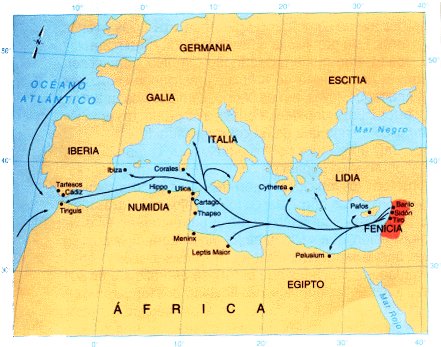
-
es.wikipedia.org/wiki/Vino_fenicioEn caché
Los fenicios fueron uno de los primeros pueblos antiguos en tener un importante efecto sobre la historia del vino. Los fenicios fueron una antigua civilización ...
-
nachobueno.wordpress.com/.../el-libano-los-fenicios-y-el-origen-del-...En caché - Similares
15 Nov 2009 – El Líbano está ubicado en la costa este del Mediterráneo en la llamada Media Luna Fértil. Pero miles de años atrás esta tierra se conocía ...
-
El vino y la historia. La alianza entre vino y cultura se remonta a los fenicios. Un experto desvela datos de las investigaciones arqueológicas relacionadas con ...
-
www.turispain.com/el-vino-fenicio:-el-mas-viejo-del-mundo.... - EspañaEn caché - Similares
Han sido muchos años de investigaciones, casi una vida en la que el doctor Robert Ballard descubridor hace 16 años de los restos del Titanic, encabeza el ...
-
brujodelcoctel.blogspot.com/.../los-fenicios-en-la-historia-del-vino-1....En caché
1 Ago 2010 – A través de su extensa red de comercio marítimo, los Fenicios tuvieron un efecto o influencia significativo en la extensión de la viticultura y la ...
-
www.taringa.net/posts/info/.../Los-Fenicios-y-el-origen-del-vino.htmlEn caché
Los Fenicios y el origen del vino La evolución y propagación del vino por toda la edad antigua tuvo a una cultura como precursora, la cual l...
-
Podemos también decir que las primeras noticias del vino de Jerez nos las proporciona en el siglo I a.C el geógrafo griego Estrabón, que atribuye a los fenicios ...
-
[PDF]
www.yravedra.com/doc/antecedentes.pdf - España
Formato de archivo: PDF/Adobe AcrobatAntecedentes del vino en Iberia. En los comienzos del comercio se transportaban vinos de la antigua Grecia, de. Fenicia, y posteriormente de Etruria (antigua ...
-
dival.academia.edu/.../Tripodes_anforas_y_consumo_de_vino_acerc...En caché
TRÍPODES, ÁNFORAS Y CONSUMO DE VINO : ACERCA DE LA ACTIVIDAD COMERCIAL FENICIA EN LA COSTA ORIENTAL DE LA PENÍNSULA IBÉRICA ...
-
www.mdzol.com/mdz/.../98753-como-guardaban-el-vino-los-fenicio...En caché
Hoy nos vamos a trasladar un poco lejos en el tiempo, a la época de los fenicios y voy a contarte cómo se las ingeniaban para guardar y trasladar sus vinos, ...
|
|
|
|
|
Los equinoccios no son fijos porque el plano del ecuador gira en relación al plano de la eclíptica; completa un giro cada 25.868 años. El movimiento de los equinoccios en la eclíptica se llama precesión de los equinoccios. Para establecer la posición real de las estrellas en un momento determinado tiene que aplicarse una corrección de precesión a las cartas celestes.
Por su parte, la nutación es un leve balanceo que experimenta la Tierra a causa de la atracción gravitacional de la Luna
Precesión
La Tierra es un elipsoide de forma irregular, aplastado por los polos y deformado por la atracción gravitacional del Sol, la Luna y, en menor medida, de los planetas. Esto provoca una especie de lentísimo balanceo en la Tierra durante su movimiento de traslación llamado "precesión de los equinoccios", que se efectúa en sentido inverso al de rotación, es decir en sentido retrógrado (sentido de las agujas del reloj).
Bajo la influencia de dichas atracciones, el eje va describiendo un doble cono de 47º de abertura, cuyo vértice está en el centro de la Tierra. Debido a la precesión de los equinoccios, la posición del polo celeste va cambiando a través de los siglos. Actualmente la estrella Polar no coincide exactamente con el Polo Norte Celeste.
Nutación
Hay otro movimiento que se superpone con la precesión, es la nutación, un pequeño vaivén del eje de la Tierra. Como la Tierra no es esférica, la atracción de la Luna sobre el abultamiento ecuatorial de la Tierra provoca el fenómeno de nutación. Para hacernos una idea de este movimiento, imaginemos que, mientras el eje de rotación describe el movimiento cónico de precesión, recorre a su vez una pequeña elipse o bucle en un periodo de 18,6 años.
En una vuelta completa de precesión (25.767 años) la Tierra realiza más de 1.300 bucles de nutación. El movimiento de nutación de la Tierra fue descubierto por el astrónomo británico James Bradley.
http://www.astromia.com/tierraluna/precesionutacion.htm
|
|
|
Hiparco, que por sus logros fue uno de los grandes astrónomos de la antiguedad, no fue el primer en registrar la posición de las estrellas, pero esa tarea lo llevó a un descubrimiento (o redescubrimiento) de gran alcance en la comprensión de los fenómenos celestes, la "precesión de los equinoccios". Esta es la historia de ese descubrimiento.
 Los movimientos del eje de la Tierra: Precesión y nutación. Crédito: Wikipedia Los movimientos del eje de la Tierra: Precesión y nutación. Crédito: Wikipedia
Ya en épocas anteriores a Hiparco se realizaron relevamientos del cielo, especialmente en Alejandría, hacia el año 270 a. c., Aristarco de Samos y otros astrónomos registraron las posiciones de las estrellas más brillantes en relación a ciertos puntos de referencia en el cielo. Hiparco de Nicea (190 a. c. - 120 a. c.) -que fue uno de los cuatro más grandes astrónomos de Alejandría, junto con Aristarco, Eratóstenes y Tolomeo-, construyó en Rodas un observatorio astronómico para hacer su propio relevamiento de las estrellas midiendo sus posiciones con la máxima precisión que pudo obtener. Y lo hizo incorporando por primera vez la clasificación mediante una escala de seis magnitudes; según el brillo aparente las estrellas se ubicaban entre la primera (la más brillante) y la sexta magnitud (la menos brillante).
Hay más de una versión sobre qué fue lo que llevó a Hiparco a realizar esa tarea. La más conocida, pero dudosa, es que fue la aparición de una estrella "nova" en el año 134 a. c. en la constelación de Escorpión lo que lo impulsó a catalogarlas. Otra versión, más probable, es que en ese mismo año halló que la brillante estrella Espiga había cambiado su posición en 2º en los 160 años anteriores.
Espiga o Spica (Alfa Virginis) es la estrella más brillante de la constelación de Virgo y la decimoquinta más brillante del cielo nocturno. De magnitud aparente +1,04, se encuentra a 260 años luz del Sistema Solar.
Al margen de cual haya sido el motivo inicial para confeccionar su catálogo de unas 1000 estrellas -número de las que se pueden ver con facilidad en Egipto, en Alejandría- el hecho es que al comenzar a relevar las posiciones de las mismas con sus propios criterios e instrumentos y compararlas con las posiciones registradas 150 años atrás por Timócaris (aprox. 320 a. c. - 260 a. c.) y Aristilo (aprox siglo VI a. c. a siglo III a. c.) y más atrás con las de astrónomos de Babilonia, comenzó a encontrar una discrepancia sistemática. Sin excepción, las distancias de todas las estrellas a los puntos equinocciales habían cambiado, por ejemplo al punto Aries (equinoccio de otoño en el hemisferio sur).
 La posición de las estrellas en coordenadas ecuatoriales. La ascensión recta tiene su cero en el punto aries. Crédito: www.lorem-ipsum.es La posición de las estrellas en coordenadas ecuatoriales. La ascensión recta tiene su cero en el punto aries. Crédito: www.lorem-ipsum.es
Era un aumento general de las longitudes celestes de las estrellas medidas de occidente a oriente. Hiparco comprendió que este fenómeno se debía no a un movimiento propio (que las estrellas sí tienen, pero aleatorio) sino más bien a un cambio de los puntos equinocciales, que sirven de origen a las longitudes. Pero esos dos puntos son la intersección de la eclíptica y el ecuador, lo que significa que uno de esos dos círculos de referencia había cambiado de posición. Hiparco, considerando que no vió a lo largo del tiempo ninguna variación ni de la oblicuidad de la eclíptica ni de las latitudes de las estrellas, dedujo que el ecuador se había desplazado lentamente de oriente a occidente, pero manteniendo su inclinación (actualmente de 23,5º, que oscila entre 22º y 24º) con respecto a la eclíptica.
El punto aries, intersección de la eclíptica y el ecuador, estaba retrogradando, desplazándose en sentido contrario al de rotación de la Tierra. El eje del planeta había cambiado su dirección en el espacio. Esto es, la Tierra no gira como un trompo cuando está derecho en plena rotación sino que se bambolea como un trompo que está perdiendo velocidad de giro. Este fenómeno se conoce como la "precesión de los equinoccios". Si bien el descubrimiento se le atribuye a Hiparco, también se considera descubridor al astrónomo babilonio Kidenas (o Kiddinu), con cuyos trabajos estaba familiarizado. Algunos historiadores además sostienen que este fenómeno ya era parcialmente conocido por astrónomos de la India.
Hiparco calculó que el eje de la Tierra se mueve describiendo un ángulo de unos 45 segundos (45") cada año (el círculo ecuatorial se divide en 360º, de 60 minutos de 60 segundos). El valor verdadero es aproximadamente 50,27", así que el valor que obtuvo fue de una gran precisión para la época.
Una simple cuenta (360º divididos por 50,27") nos permite estimar en unos 26.000 años el tiempo que le lleva al eje de la Tierra completar una vuelta de balanceo completa para volver al punto de partida y recomenzar el ciclo. Dicho de otra manera, el eje de la Tierra está apuntando hoy al mismo punto del cielo que hace 26.000 años: la Estrella Polar alfa de la Osa Menor, la estrella brillante más cercana al Polo Norte celeste de la Tierra, sin coincidir exactamente.
 La posición del Polo Norte a lo largo de los milenios (ciclo de aproximadamente 26.000 años). Crédito: www.astrosafor.net La posición del Polo Norte a lo largo de los milenios (ciclo de aproximadamente 26.000 años). Crédito: www.astrosafor.net
El descubrimiento de la precesión de los equinoccios lo llevó a Hiparco a establecer dos clases de años: el "año trópico", que es el intervalo comprendido entre dos pasos sucesivos del sol por uno de los dos puntos equinocciales; y el "año sideral", que es el intervalo comprendido entre dos conjunciones sucesivas del sol con una misma estrella.
El catálogo estelar de Hiparco fue tomado como punto de partida por Tolomeo, su gran admirador, en el siglo II d.c., para realizar su propio catálogo, incluido en su famoso tratado de astronomía. La obra original lleva el título en griego de "gran composición", que después fue traducido por los árabes como Al Magisti, de donde se deriva Almagesto.
Sobre la precesión, los solsticios y el afelio y el perihelio de la órbita terrestre
Hay un error que se suele cometer y es asociar la posición de los solsticios con el afelio y el perihelio de la órbita, especialmente en las ilustraciones didácticas que muestran las posiciones de las estaciones (recordemos que la órbita de la tierra es una elipse -de escasa excentricidad pero elipse al fin-, con el Sol en el foco. El máximo acercamiento al Sol se produce en el perihelio y el máximo alejamiento en el afelio). Debido justamente al movimiento de precesión, el solsticio de verano, por ejemplo, se está desplazando contínuamente a lo largo de la órbita, pasando por el afelio (o por el perihelio) una vez cada cada 26.000 años, el tiempo que le lleva a la Tierra una vuelta completa de balanceo.
La llegada de la Tierra al perihelio de la órbita se produce actualmente el 3 de enero, esto es unos 13 días después del solsticio de verano austral el 21 de diciembre.
Ilustración incorrecta versus ilustración correcta
 Esta ilustración, errónea, está, al día de hoy (aclarado porque puede ser reemplazada), en "Precesión de los equinoccios" en Wikipedia Esta ilustración, errónea, está, al día de hoy (aclarado porque puede ser reemplazada), en "Precesión de los equinoccios" en Wikipedia
 Una ilustración correcta, que muestra con claridad y detalle la diferencia entre solsticios y afelio y perihelio en www.larouchepub.com Una ilustración correcta, que muestra con claridad y detalle la diferencia entre solsticios y afelio y perihelio en www.larouchepub.com
Al Battani corrige a los griegos
Al Battani (858-929), uno de los más notables y famosos astrónomos árabes, realizó sus observaciones entre 877 y 918 d.c. en la ciudad de Rakka, donde vivió y en Antioquía. Determinó la oblicuidad de la eclíptica con un error menor de medio minuto de arco con respecto al valor actual, y logró establecer la época de los equinoccios dentro de un intervalo de una o dos horas. Finalmente rectificó justamente el error cometido por los astrónomos griegos, de que el perihelio solar estaba inmóvil con respecto a los equinoccios y no participaba del movimiento de precesión.
Así lo explica Pedro Saizar, Doctor en astronomía, con más autoridad que yo
Pedro Saizar, sobre este error, responde así a una inquietud de un lector en Correo de lectores de la revista Ciencia Hoy:
"Perihelio y solsticio son dos cosas absolutamente independientes. En mi opinión, la errónea creencia de que coinciden proviene de la forma en que usualmente se dibuja la órbita de la Tierra. Si recordamos que esta es elíptica, con el Sol en uno de los focos, el perihelio es el punto de la órbita terrestre más cercano al Sol, es decir, más próximo al foco de la elipse que ocupa el Sol. El perihelio es, también, aquel punto de su órbita en que la Tierra se desplaza a la máxima velocidad.
El solsticio, en cambio, es el momento en que el Sol se ve desde la Tierra en la posición más alejada del ecuador, cosa que sucede dos veces por año. Es un fenómeno causado por el hecho de que el eje de la Tierra no es perpendicular al plano de su órbita o eclíptica. Si no fuese así y la Tierra se trasladara con su eje de rotación perpendicular al plano de su órbita (lo que se dibujaría vertical si este se representara horizontal), existiría aún el perihelio pero no se producirían los solsticios. En estas hipotéticas circunstancias, el Sol, visto desde la Tierra, nunca se apartaría del ecuador y sus rayos siempre caerían verticales a mediodía sobre el ecuador terrestre (y el plano de este coincidiría con el de la eclíptica). Pero como el eje terrestre real tiene una inclinación con respecto a una hipotética vertical, se produce un solsticio en el momento en que la órbita aparente del Sol alcanza su máximo alejamiento del ecuador, hacia el norte o el sur, lo que marca el verano y el invierno en cada hemisferio del planeta. En qué lugar de su órbita está la Tierra en cada uno de esos momentos no está determinado por la forma elíptica de su órbita sino por la dirección en que está inclinado su eje polar."
 La órbita de la Tierra vista desde arriba. El punto señala la posición del polo. Si este tuviera una orientación como la de la figura, el solsticio ocurriría en el punto 2, mientras que el perihelio sigue ocurriendo en el punto 1. Crédito: Ciencia Hoy. La órbita de la Tierra vista desde arriba. El punto señala la posición del polo. Si este tuviera una orientación como la de la figura, el solsticio ocurriría en el punto 2, mientras que el perihelio sigue ocurriendo en el punto 1. Crédito: Ciencia Hoy.
De Hiparco a Newton, o del descubridor al explicador
Newton probó que si la Tierra era achatada por los polos -y lo es- la fuerza gravitacional de la luna (y en menor medida el Sol y en un grado aun menor los otros cuerpos del sistema solar) actuando sobre su abultamiento ecuatorial tendería a llevar su ecuador al plano en que la Luna describe su órbita alrededor de la Tierra. Así quedaba explicada la precesión de los equinoccios. La Tierra entonces no puede girar alrededor de un eje fijo debido a la constante fuerza ejercida por la Luna sobre nuestro planeta.
Nutación, la precesión no lo es todo
En 1728 el astrónomo inglés James Bradley descubrió que el movimiento de precesión no es una trayectoria perfectamente circular, sino que la circunferencia es ondulada, o modulada, sufriendo el polo norte celeste un leve bamboleo adicional cada 18,5 años aproximadamente, debido a las fuerzas externas de atracción gravitatoria entre la Luna y el Sol con la Tierra.


Arriba: Se ilustra en rojo el movimiento resultante de la dirección del eje terrestre debido a la acción conjunta de la precesión y la nutación. Crédito: www.ciencianatura.com.
Abajo: Rango de variación angular de la oscilación por nutación. Crédito: Wikipedia
http://universoalavista.blogspot.com.ar/2011/03/hiparco-y-la-precesion-de-los.html
|
|
|
|
|
|
|
| milky way in Simple Gematria Equals: 119 |
( |
m 13 |
i9 |
l 12 |
k 11 |
y 25 |
0 |
w 23 |
a1 |
y 25 |
) |
| queen mary in Simple Gematria Equals: 119 |
( |
q 17 |
u 21 |
e5 |
e5 |
n 14 |
0 |
m 13 |
a1 |
r 18 |
y 25 |
|
| hebrew calendar in Simple Gematria Equals: 119 |
( |
h8 |
e5 |
b2 |
r 18 |
e5 |
w 23 |
0 |
c3 |
a1 |
l 12 |
e5 |
n 14 |
d4 |
a1 |
r 18 |
| mary magdalene in Simple Gematria Equals: 119 |
( |
m 13 |
a1 |
r 18 |
y 25 |
0 |
m 13 |
a1 |
g7 |
d4 |
a1 |
l 12 |
e5 |
n 14 |
e5 |
|
PARAMOUNT/PARA-GUAY
| paramount in Simple Gematria Equals: 119 |
( |
p
16 |
a
1 |
r
18 |
a
1 |
m
13 |
o
15 |
u
21 |
n
14 |
t
20 |
) |
| paramount in Simple Gematria Equals: 119 |
( |
p
16 |
a
1 |
r
18 |
a
1 |
m
13 |
o
15 |
u
21 |
n
14 |
t
20 |
) |
PARAMOUNT/PARA-GUAY
| paramount in Simple Gematria Equals: 119 |
( |
p
16 |
a
1 |
r
18 |
a
1 |
m
13 |
o
15 |
u
21 |
n
14 |
t
20 |
) |
|
|
|
|
|
Hoshana Rabbah (La Gran Salvación)
Joab tomó el lugar de las Aguas en Rabbá, en donde garantizaría para Israel una fuente para saciar la sed del pueblo, así mismo al cristiano le corresponde tomar la palabra como referente de vida por el Espíritu Santo, para que de su interior fluyan los corrientes de aguas que cumplan el propósito salvador de Dios para éste mundo. (Juan 7:37-39; Juan 4:13-14)37-39
AMMAN/RABA/FILADELFIA = 7 COLINAS
7 COLINAS
En el santoral catolico el dia de BETSABE es el 4 de JULIO (Independencia de EEUU) con fuerte nexo con FILADELFIA
RABA
|
|
|
|
|
 |
La Biblia de las Américas (© 1997 Lockman)(Porque sólo Og, rey de Basán, quedaba de los gigantes. Su cama era una cama de hierro; está en Rabá de los hijos de Amón. Tenía nueve codos de largo y cuatro codos de ancho, según el codo de un hombre.)
La Nueva Biblia de los Hispanos (© 2005 Lockman)
"Porque sólo Og, rey de Basán, quedaba de los gigantes. Su cama era una cama de hierro; está en Rabá, ciudad de los Amonitas. Tenía 9 codos (4 m) de largo y 1.6 metros de ancho, según el codo de un hombre (la distancia del codo al fin de mano, 45 cm).
Reina Valera Gómez (© 2010)
Porque sólo Og, rey de Basán, había quedado del resto de los gigantes. He aquí su cama, una cama de hierro, ¿no está en Rabá de los hijos de Amón?; la longitud de ella de nueve codos, y su anchura de cuatro codos, al codo de un hombre.
Reina Valera (1909)
Porque sólo Og rey de Basán había quedado de los gigantes que quedaron. He aquí su cama, una cama de hierro, ¿no está en Rabbath de los hijos de Ammón?; la longitud de ella de nueve codos, y su anchura de cuatro codos, al codo de un hombre.
Sagradas Escrituras (1569)
Porque sólo Og rey de Basán había quedado del resto de los gigantes. He aquí su cama, una cama de hierro, ¿no está en Rabá de los hijos de Amón? La longitud de ella de nueve codos, y su anchura de cuatro codos, al codo de un hombre.
דברים 3:11 Hebrew OT: WLC (Consonants & Vowels)
כִּי רַק־עֹוג מֶלֶךְ הַבָּשָׁן נִשְׁאַר מִיֶּתֶר הָרְפָאִים הִנֵּה עַרְשֹׂו עֶרֶשׂ בַּרְזֶל הֲלֹה הִוא בְּרַבַּת בְּנֵי עַמֹּון תֵּשַׁע אַמֹּות אָרְכָּהּ וְאַרְבַּע אַמֹּות רָחְבָּהּ בְּאַמַּת־אִישׁ׃
Deuteronomy 3:11 New American Standard Bible (© 1995)(For only Og king of Bashan was left of the remnant of the Rephaim. Behold, his bedstead was an iron bedstead; it is in Rabbah of the sons of Ammon. Its length was nine cubits and its width four cubits by ordinary cubit.)
|
3. Salmos 22:12: Me han rodeado muchos TOROS; Fuertes TOROS de Basán me han cercado.
7. Ezequiel 39:18: Comeréis carne de fuertes, y beberéis sangre de príncipes de la tierra; de carneros, de corderos, de machos cabríos, de bueyes y de TOROS, engordados todos en Basán.
|
|
|
|
|
Desde el 4 de Julio hasta el 31 de diciembre tenemos 180 dias y desde el 1 de enero hasta el 18 de marzo/marte tenemos 77 dias. 180+77=257 interrelacionado con el paralelo de Washington D.C en el estado de Columbia. Es muy probable que Cristo haya resucitado en ese dia. |
|
|
|
|
by Goro Adachi
August 9, 2003
from Etemenanki Website
Introduction
What lies at the core of the ‘Time River Theory’ is more than just a theory, but a factual ‘smoking gun’ capable of utterly decimating what is being passed off as ‘reality’ today. The Time River Theory is undoubtedly an ‘extraordinary claim’.
But it is one that is supported by ‘extraordinary evidence’. Indeed, it is this author’s position that the discovery of the Time Rivers heralds the last tick of the ‘time bomb’ that ends the illusion of the ‘Matrix’, so to speak. The new reality lets us discern who we really are, where we came from, and where we are going.
The Time River Theory primarily involves two ancient river systems: the Nile in Africa and the Tigris-Euphrates in the land of Mesopotamia.
By the end of this paper, the reader will come to understand the explosive implication of the strange configuration depicted in the image right - that our planet’s major rivers have been intelligently designed. It would represent the closest thing mankind has seen to the ‘fingerprints of the gods’.
The strength of the theory lies in the fact that its basic claim can be presented concisely and understood by the average people without much difficulty. It is the unusual combination of clarity and seeming impossibility that makes this ‘extraordinary claim’ extraordinarily plausible, if not undeniable.
It would ultimately come down to the question:
‘Do you believe your own eyes or not?’
It is of course ridiculous to think that major rivers such as the Nile are intelligently created ‘monuments’ bearing encoded messages. But that is exactly what is logically demanded by the body of evidence presented in this paper.
The Nile or denial - that may already be the real issue.
Having expressed the level of confidence, the author would like to sincerely encourage all to critically examine the following discussion, designed to present a key portion of the Time River Theory.
For a complete presentation of the wide-ranging theory and its unsettling implications for our own time, please see the book The Time Rivers (2003) by the author.
Hints of Intelligent Design
Shown below is an overview map of the Nile in Africa, the world’s longest river.
This is the ancient river that gave rise to the mysterious ancient Egyptian civilization thousands of years ago.
And here are the initial clues hinting at the existence of intelligence behind the river’s layout:
-
The Nile is distinctively vertical (longitudinal), and it is the only notable river on this planet to flow directly northward.
-
The Nile begins at the equator and disintegrates precisely at 30°N latitude, marked by Egypt’s capital Cairo and Giza, the home of the great pyramids and the Sphinx.[1]
-
The generally straight Nile makes a dramatic turn southward near the halfway point. The northern peak of this remarkable bend - sometimes referred to as the ‘Great Bend’ - pinpoints latitude 19.5°N.
The significance of #3 comes from the fact that 19.5° is considered a ‘tetrahedral constant’, deriving from the geometric configuration of a circumscribed tetrahedron shown below.
In terms of the ‘hyperdimensional physics’ model promoted by researcher Richard Hoagland, well known for his investigation into the ‘monuments of Mars’, the angle even represents an inter-dimensional ‘gateway’ of some sort. This notion is echoed by the great pyramids at Giza - a place traditionally signifying a 'gateway' (Rostau) - in that their layout prominently produces this very angle.
The fact that the longitude pinpointed by the same Bend’s peak is 33.0°E intensifies our curiosity as ‘33’ too happens to be a key number detected by Hoagland’s team, The Enterprise Mission.
Indeed, 19.5 and 33 are said to be the two ‘ritual numbers’ repeatedly encoded into various aspects of NASA space missions.
In 1997, for example, the Pathfinder space probe landed on Mars at almost exactly 19.5°N. 33°W.
That this was no coincidence is evidenced by the fact that:
-
the lander dropped on the ‘tetrahedral latitude’ was tetrahedral in shape;
-
at the moment of touchdown, Earth was positioned 19.5° above the eastern Martian horizon as seen from the landing site.
As Mike Bara, Hoagland’s right-hand man at the Enterprise Mission, wrote:
Pathfinder’s unique tetrahedral spacecraft design geometry, coupled with the totally “recursive” tetrahedral geometry of the landing site itself, was obviously intended by NASA “ritualists” behind the scenes to celebrate - on their first return to Mars in over twenty years - the two key Hyperdimensional numbers underlying all the NASA rituals - “19.5” and “33.”[2]
Whether or not NASA intentionally conducts such ‘rituals’ is still a contentious issue, of course. But the coincidence of the two numbers is difficult to ignore.
Where there is smoke, as they say, there is usually fire.
So how should we interpret these geographical hints provided by the Nile? Are we to believe that the Nile is a 'monument' carrying some sort of message?
While admittedly a wild speculation, this is certainly not the first time such an idea has been put forward.
There is, for example, researcher Livio Catullo Stecchini, whose view is presented in Peter Tompkin’s Secrets of the Great Pyramid:
The Egyptians were proud that their country had some unique geographic features which could be expressed in rigorous geometric terms and had a shape which related to the order of the cosmos as they saw it. They believed that when the gods created the cosmos they began by building Egypt and, having created it perfect, modeled the rest around it. …[The] Egyptians put great stress also on the geographic peculiarities of the course of the Nile.[3]
So the question is: Are these Nilotic ‘peculiarities’ a result of some deliberate design? Did the ‘gods’ literally construct the Nile and encode into its layout their cosmic knowledge?
Throughout history much has been said about ancient monuments - such as those at Giza (the pyramids and Sphinx) - bearing very advanced knowledge surpassing all that came afterward. It is of course a controversial view that many find uncomfortable.
But it pales in comparison to the much crazier possibility emerging here... that the world’s longest river, clearly visible from space, may be a gigantic ‘monument’!
A Literal ‘River of Time’?
Suspending our disbelief for a moment, let us ponder just what the encoded ‘cosmic knowledge’ may be. What kind of information could be so important as to be transmitted this way?
This question leads us to the next clue. As noted earlier, the latitudinal length of the Nile is almost exactly 30 degrees.
The number ‘30’ happens to be closely attached to the notion of time:
-
Saturn, traditionally considered the god/planet of time, has an orbital period of ~30 years.[4]
-
One month - the Moon’s orbit around Earth - is approximately 30 days. (In ancient Egypt, each month was exactly 30 days.)
-
The apparent path of the sun in the sky (the ecliptic) is traditionally divided into twelve zodiacal ‘signs’ (Pisces, Aires, Taurus, etc.), 30 degrees each, corresponding to the sun’s movement in two hours. (The Babylonians, the Chinese, etc. actually divided the day into not 24 but 12 equal parts, and so one subdivision of the day corresponded to 30 degrees [i.e. 360/12=30].)
-
The seb festival of the ancient Egyptians, commemorating the symbolic death/renewal of the king, was held in the 30th year of the reign.[5]
So the implication here is that the Nile is to be viewed as a ‘river of time’. This is poetically appealing at least. After all, it is often said that ‘a river is like the flow of time’.[6]
The above interpretation is reinforced by certain information transmitted by Plutarch, a renowned Greek writer and biographer from around AD 100.
It concerns Saturn, the god of time, who was called ‘Cronus’ in Greek (related to the term ‘Chronos’ meaning ‘time’[7]):
There is also a religious lament sung over Cronus. The lament is for him that is born in the regions of the left, and suffers dissolution in the regions on the right; for the Egyptians believe that the eastern regions are the face of the world, the northern the right, and the southern to the left. The Nile, therefore, which runs from the south and is swallowed up by the sea in the north, is naturally said to have its birth on the left and its dissolution on the right.[8]
Not only does Plutarch reveal here that Cronus/time arises in the south and ends in the north just like the Nile, he even goes on to draw a direct parallel between Cronus/time and the Nile!
This is almost an open and direct acknowledgement that the Nile may indeed represent the flow of time.
God of Time, God of the Nile
Another telling clue is found in the fact that various mythological gods associated with time are also often associated with the Nile.
For instance:
-
Cronus-Saturn’s otherworldly domain called Ogygia is applicable to the Nile since the river was similarly called ‘Ogygian’ by the ancient Greek writer Aeschylus.[9]
-
The Moon, associated with the ‘temporal number’ 30 via its orbital period (30 days), is traditionally identified with the Egyptian god of wisdom called Thoth. Not only was Thoth considered the measurer of time, he was also represented by the ibis, an animal closely associated with the Nile.[10]
-
More striking is Osiris, the most revered and complex deity in ancient Egypt, popularly described as the god of the dead.
-
Osiris is quite simply the ‘god of the Nile’. This can be established through his traditional identification with Apis and Hapi, both considered to embody the Nile. Osiris was also known as Serapis, a name deriving from Ausar-Hapi, meaning ‘Osiris of the Nile’. We also have Herodotus’ well-known statement: ‘the Nile is the gift of Osiris, but Egypt is the gift of the Nile’.
-
And we find that Osiris, the god of the Nile, is also a god of time not unlike Saturn. Osiris was identified with the phoenix, the mythical fire-bird of cyclical rebirth and the patron of all time division.[11] In the ancient Egyptian Book of the Dead is found the statement: ‘I am Time and Osiris’.[12]
-
And in ancient India the name given to Orion (the celestial form of Osiris) was Kal-Purush, or ‘Time Man’.[13]
-
To all intents and purposes, Osiris is the Egyptian version of Cronus-Saturn, the god of time.[14] In confirmation of this, historical epithets of Orion (= Osiris) include ‘Saturnus’ - i.e. Saturn.[15]
So, at least mythologically, the Nile-time connection is well supported.
http://www.bibliotecapleyades.net/egipto/esp_egipto_nile.htm
|
|
|
|
|
Giza Producing ‘Anchor Dates’
If the Nile really is a literal river of time - a ‘Time River’ - then the possibility must be considered that there is a tangible timeline encoded into its design.
And it can be reasonably assumed that the river’s beginning point at the equator represents the earliest point on the timeline, and Giza/Cairo at the edge (30°N) the ‘end of time’. (See Appendix 1 for discussion on the beginning latitude of the Nile.)
The most sensible time-encoding system here would be one based on latitude, where a linear, northward-moving timeline is superimpose on the Nile.
To derive a timeline in this system, it is necessary to first have at least two ‘anchor points’, or 'anchor dates', placed upon the Nile. The rest would be just a matter of simple calculation. (The distance between the two anchor points will have the function of a base unit for the timeline.)
But there needs to be a good rationale for selecting these points/dates.
For this, we turn to the Giza monuments, evidently an integral part of the Nile scheme (marking the river’s northern edge). Giza, through its astronomical alignments, manages to give us just what we need to turn the ancient river into a tangible map of time.
The key here is Robert Bauval’s popular ‘Orion Correlation Theory’ (or more broadly the ‘Star Correlation Theory’) which traces the Giza layout back to the stars. The basic idea is quite simple. The theory essentially says that the arrangement of the three great pyramids standing there closely emulates that of the three Belt Stars of Orion, the heavenly Osiris.
Bauval demonstrates this first by noting that the smallest pyramid is slightly offset from the diagonal line made by the other two pyramids.
He then compares this to a similar offset seen in the Orion Belt Stars, with the dimmest star congruently corresponding to the smallest pyramid.
This sky-ground correspondence is supported by a passage from the ancient Egyptian ‘Pyramid Texts’ which makes it plain that the pyramid and Osiris-Orion are closely linked:
O Horus, this King is Osiris [= Orion], this pyramid of the King is Osiris, this construction of his is Osiris; betake yourself to it, do not be far from it in its name of ‘Pyramid’…[16]
Next, based on this initial ‘as above, so below’ connection, Bauval points out that there was an extraordinary set of alignments around 10,500 BC:
Around 10,500 BC:
-
Orion reached its lowest point at the meridian in its 26,000-year precessional cycle. (Precession slowly shifts Orion and other stars up and down the meridian, the imaginary north-south line drawn in the sky where the stars achieve their highest daily altitudes.)
-
On the vernal equinox, the Great Sphinx, directly facing east, witnessed the rising of its two celestial counterparts - the sun and Leo.
At the moment of equinoctial sunrise (c. 10,500 BC):
-
Orion was positioned right at the meridian.
-
In the southern sky, the Milky Way was seen roughly vertical and positioned in such a way that it appeared to be an extension of the Nile. Orion was situated just to the right of the celestial river - closely mimicking the configuration of the Giza pyramids and the Nile.
It is reasonable to conclude that the builders of the Giza monuments intended to commemorate the extremely ancient epoch of 10,500 BC.
We can refine the date by taking a closer look at Point #1, i.e. Orion’s lowest transit point (‘southern culmination’). It occurred more exactly c. 10,600 BC. This, then, is our first ‘anchor date’.
As for the second ‘anchor date’, the answer turns out to be the ‘Pyramid Age’ when the pyramids themselves were built - around 2500 BC.
The date can be refined through another Giza celestial alignment, this time involving the four ‘air shafts’ (or 'star shafts') emanating from the so-called King’s Chamber and Queen’s Chamber inside the Great Pyramid.
Expanding on the theory of Alexander Badawy and Virginia Trimble,[17] Bauval found that these shafts, targeted at the meridian (i.e. due south/north), are angled just right so that around 2400 BC they aligned with key stars crossing the meridian ('transit').
The southern shafts were aimed at Alnitak (of Orion) and Sirius; the northern ones were aimed at Beta Ursa Minor (‘Kochab’) and Alpha Draconis (‘Thuban’, the ancient Pole Star).
Bauval claims that these alignments collectively pinpoint c. 2450 BC, but this is not quite accurate. It should be more like c. 2350 BC. All the star-shaft alignments occurred at the latter time except for Orion’s alignment with the King’s Chamber southern shaft (c. 2490 BC). But as Dr. Thomas G. Brophy points out, the same shaft did come into alignment with the Galactic Center around 2350 BC.[18]
At this point, then, the Giza monuments have given us two solid anchor dates, 10,600 BC and 2350 BC.
A Timeline Emerges
The next step is to figure out where to place these anchor dates along the Nile.
For 10,600 BC, it is actually a simple matter. Since the ‘10,500 BC epoch’ appears to signify the mythical ‘First Time’ (Zep Tepi), as postulated by Bauval and Hancock, it would naturally go to the source of the Nile at the equator.
It is where ‘time’ begins, as the Nile flows out of Lake Victoria. In support of this designation, we find that the same epoch also happens to mark the establishment of the Nile’s equatorial Lake Victoria outlet.[19]
Additionally, the usage of the equator as the beginning latitude is strongly encouraged by Giza’s 10,600 BC celestial alignment.
Let us examine it again:
-
Orion was positioned due south and as close to the horizon as possible, thus guiding our attention toward the southernmost source of the Nile (Lake Victoria) situated due south of Giza.
-
Point 1 was accompanied by the equinoctial sunrise with Leo due east. Since the equinoxes are when the sun is at the extension of the equator (called the ‘celestial equator’), it tells us that 10,600 BC is to be seen as an equatorial (anchor) date.
As for the 2350 BC anchor date, we can assume that it will go to one of the following key points on the Nile:
-
the confluence at Khartoum
-
the Atbara confluence
-
the Great Bend peak
-
Giza/Cairo
The question is: Which one?
A big clue here comes from Sirius and Orion’s Alnitak, two prominent stars from the Great Pyramid's star-alignment scheme. They happened to produce the angle 19.5° around 2350 BC.
When Sirius was rising at the horizon as viewed from Giza, Alnitak we seen hovering 19.5° above the horizon. (See illustration below.)
This suggests that the date 2350 BC and the angle/latitude 19.5° are to be united. Hence we are encouraged to assign the second anchor date to the Great Bend’s peak at 19.5°.
There are other clues supporting the arrangement - including the fact that the general region of the Great Bend (Nubia/Kush) was once called the ‘Land of the Bow’ (Ta-Seti), which strongly resonates with the ‘Sirian’ nature of the 2350 BC-19.5°N anchor point, because Sirius’ various epithets happen to include ‘Bow Star’ (as well as ‘Arrow Star’).
So, with the two anchor points firmly established, we are now ready to move on to the critical step - the conversion of Nilotic latitudes into dates.[20]
As the highlights below show, what emerges is a startling timeline:
-
Khartoum at 15.60°N. corresponds precisely to 4000 BC.
-
The Atbara-Nile confluence at 17.67°N. corresponds to 3124 BC.
-
Giza/Cairo at 30.00°N. corresponds to AD 2093.
For those familiar with the general outline of ancient history, the significance of the first two dates, 4000 BC and c. 3100 BC, should be immediately clear. The third date c. AD 2100 is intriguing too for its close proximity to our own time.
For those not very familiar with ancient chronology, 4000 BC is in various ways - historically, religiously, and esoterically - the ‘beginning of the world’:
-
It was around 4000 BC that the first known high civilization called Sumer suddenly rose in Mesopotamia (present Iraq) to begin ‘history’.
-
The year 4004 BC is the standard Christian date for Adam, the first man, based on the scriptural calculation done by Archbishop James Ussher in the mid-seventeenth century (Annales Veteris Testamenti). In his calculation, Ussher even applied the date 2348 BC to the Great Flood, which almost exactly matches one of our anchor dates (2350 BC)!
-
4000 BC is the beginning date used in the calendar adopted by Freemasonry - a quasi-esoteric fraternal organization whose enigmatic tradition can be traced back to various ancient cultures, including ancient Egypt. (Remarkably, the highest rank in Scottish Freemasonry is called ‘33rd Degree’ as if in reference to the key Nilotic longitude, 33°E.)
The other ancient date pinpointed, c. 3100 BC, has similar implications:
-
The date coincides with the beginning of ancient Egypt - none other than the ‘gift of the Nile’ itself!
-
It was indeed around 3100 BC that King Menes commenced the Dynastic period as he unified Lower Egypt and Upper Egypt - an event known as the ‘Unification of the Two Lands’.
-
The date coincides with what the Mayan calendar calls the ‘Birth of Venus’ (3114 BC), the beginning of the current age.[21]
-
For the Hindus, too, c. 3100 BC was the beginning of the present age called Kali Yuga.[22]
It is quite evident that the Nile Timeline is very meaningful.
Now, before moving on to the next step, let us divide up the Nile according to the zodiacal Ages, each lasting roughly 2160 years. (We are currently living near the end of the 'Age of Pisces' and about to move into the 'Age of Aquarius'.)
The illustration below shows the Nile so rendered.
We see that the river covers exactly six Ages - Leo, Cancer, Gemini, Taurus, Aries, and Pisces. Notice that the middle section around the Great Bend corresponds to the Age of Taurus.
This will be shown to have a profound implication shortly.
http://www.bibliotecapleyades.net/egipto/esp_egipto_nile.htm
|
|
|
|
|
Tratando de racionalizar el calendario de Noe, en funcion a Sirio, considerando que el 3 de Febrero es el dia numero 34 (dia posterior al numero 33) es increible que el 15 de Agosto nos cae en forma numeral DIA NUMERO 194 (17 DE TISRI O 17 DEL SEPTIMO MES) al igual que Genesis 8:4. En el contexto a que en 1917 la LUNA LLENA DE AÑO NUEVO FUE EL 8 DE MARZO TAMBIEN ES INCREIBLE QUE EL 17 DE SEPTIEMBRE O 17 DEL SEPTIMO MES (ANTIGUA DENOMINACION) NOS CAE EN EL 194 LUGAR. Aparentemente el 3 de febrero es el PRIMER DIA DEL AÑO DE NOE. Otro detalle matematico es que el 13 de Agosto (dia numero 225=ciclo de Venus) nos cae, insisto desde el 3 de febrero, 15 de Tisri, osea en la FIESTA DE LOS TABERNACULOS. ¿PORQUE ROSH HASHANAH DE NOE EL 3 DE FEBRERO?
|
|
|
 Primer Primer
 Anterior
15 a 29 de 434
Siguiente Anterior
15 a 29 de 434
Siguiente Último
Último
|

